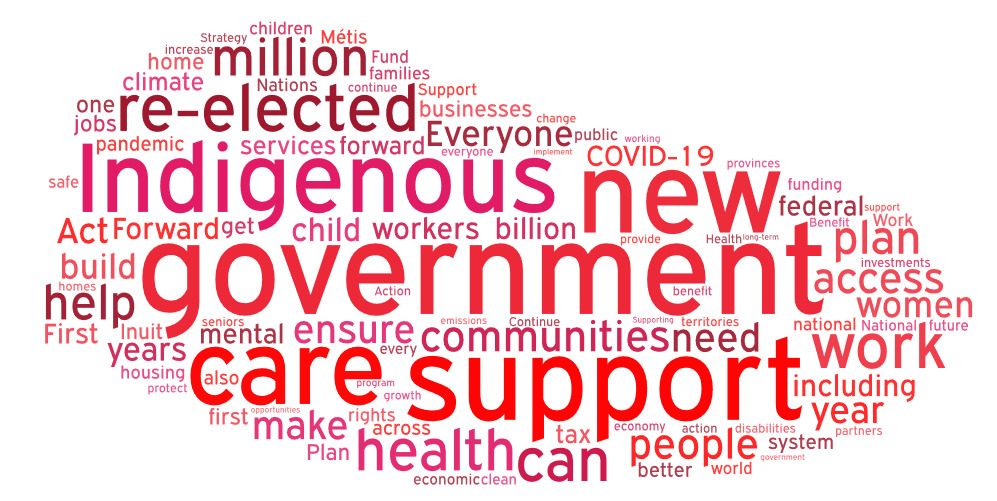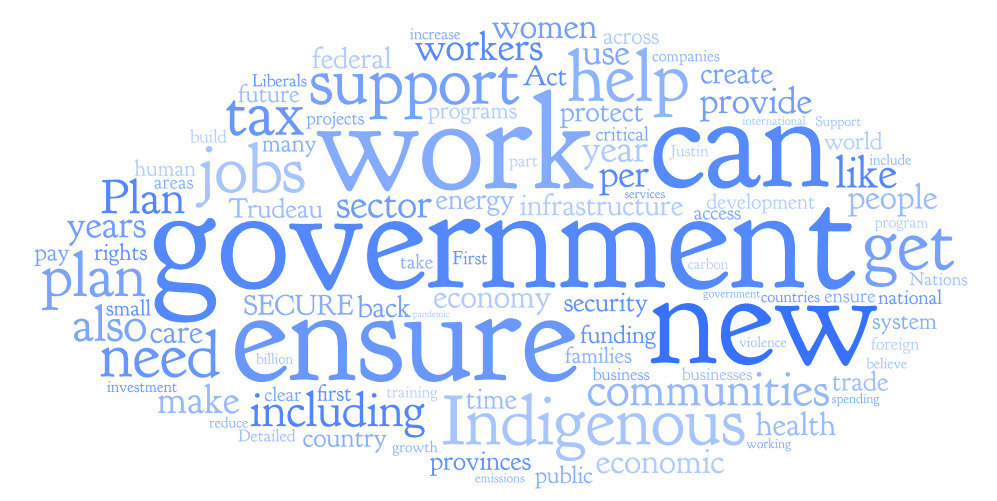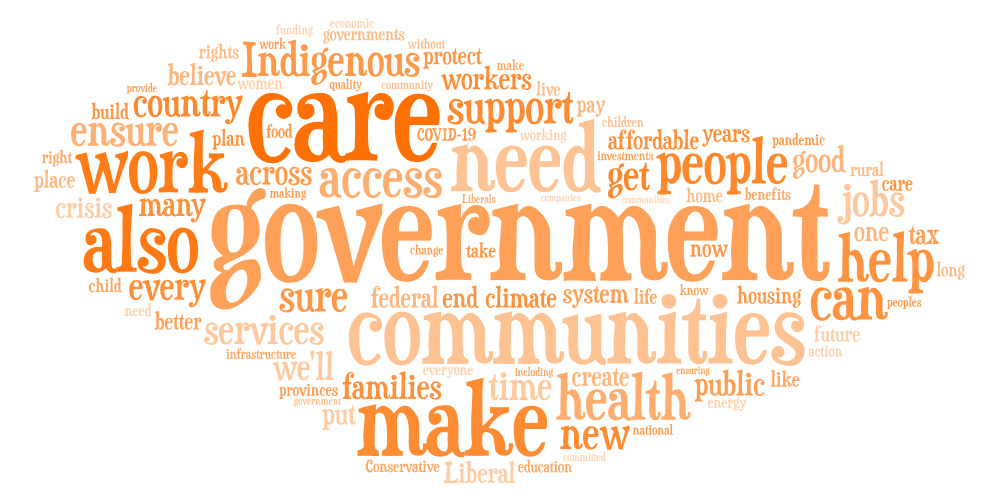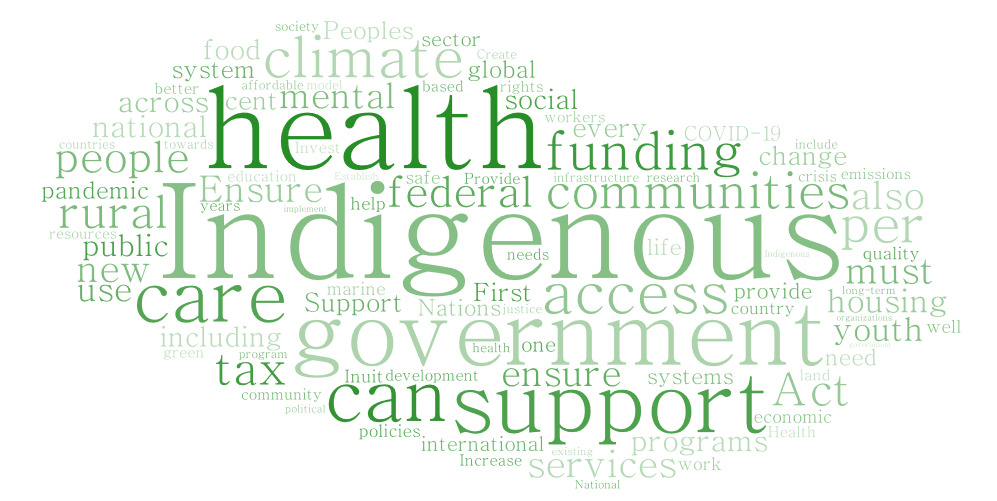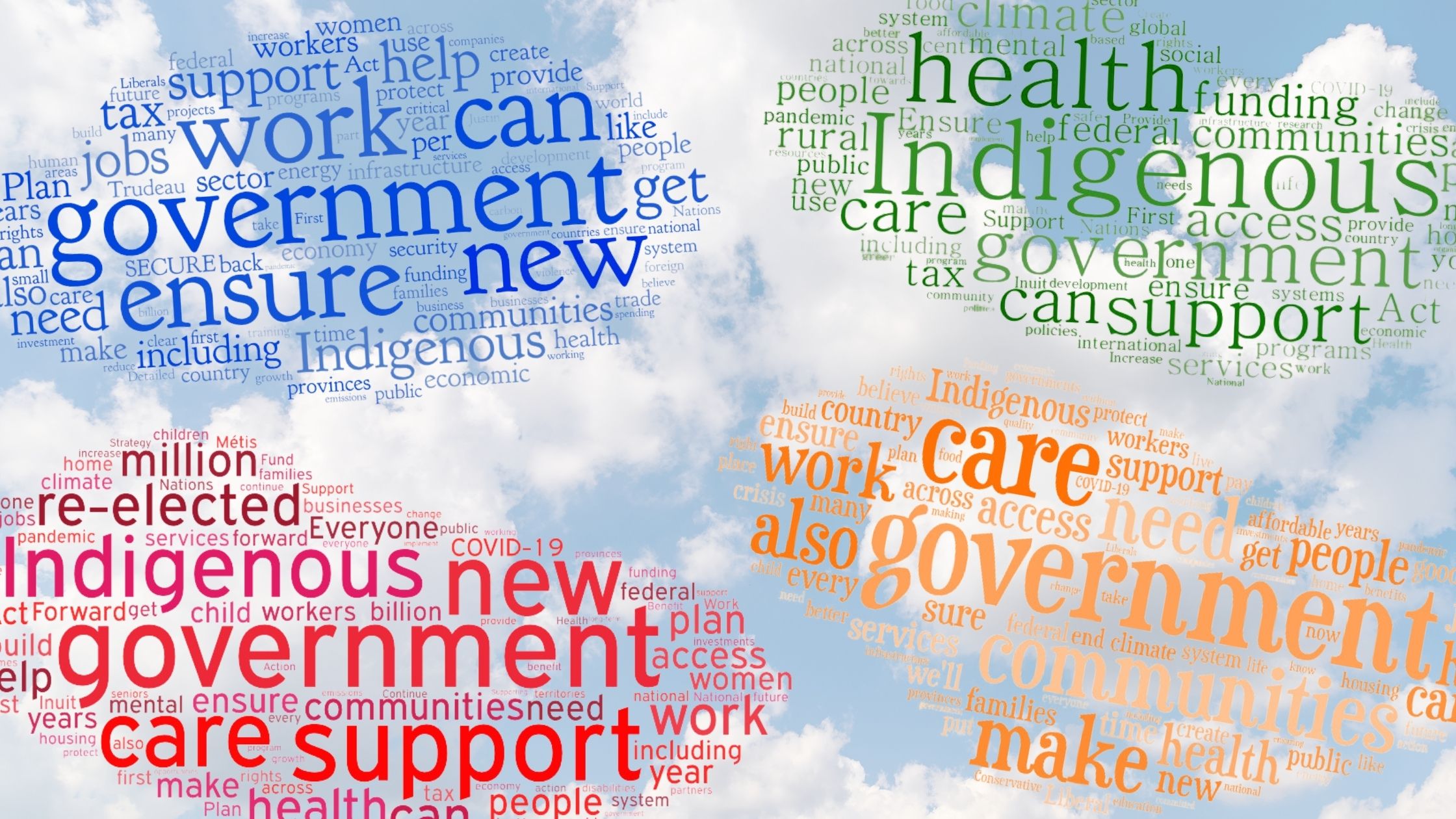
Tired of reading complicated election platforms, struggling to figure out which party has your interests at heart? West Coast Environmental Law invites you to take a step back from the campaign rhetoric and look at some pretty pictures – word clouds to be precise – instead.
Seriously though, sometimes it’s important to take things up to 10,000 feet and simply look at what the parties are talking about. We’ve generated word clouds from the platforms of the federal Liberals, Conservatives, NDP and Greens, as well as a few thoughts about what words come up most frequently.
The word clouds below contain the 100 most common words that appear in each of the party platforms – excluding overly common words that appear in all platforms (like “Canada/Canadian”, the party's name, and the word “will” in relation to their commitments). The bigger the word, the more frequently it appears in the platform text.
Liberal Party of Canada
Conservative Party of Canada
New Democratic Party
Green Party of Canada
Talking about the environment
All four parties talk about the environment in their election platforms (see how many environment-related words you can find it in each word cloud and let us know in the chat below). Of course, mentioning the environment doesn’t tell us what the platform says about it – you’ve got to read the platform for that – but it does perhaps indicate the level of attention given to each issue.
All four parties talk about climate change. Below is the relative frequency of the word “climate” among the four parties.

Another way to look at the platforms is to list the five top “environment-related” words used by each party. This analysis can be a bit subjective. For example, is “water” environmental when many of the mentions are about drinking water infrastructure? How about “energy” when it may move us in the wrong direction? Nonetheless, here’s my take on the top five.
|
Liberal Party |
Conservative Party |
New Democratic Party |
Green Party |
|
climate (61) |
energy (54) |
climate (72) |
climate (90) |
|
emissions (36) |
emissions (39) |
energy (38) |
emissions (31) |
|
clean (31) |
carbon (36) |
carbon (21) |
marine (31) |
|
net-zero (24) |
climate (28) |
emissions (21) |
green (24) * |
|
water (21) |
natural resources (21) |
water (17) |
resources (21) |
* - Note that this count refers to the use of “green” with a lowercase g used as an adjective, and does not include mentions of “Green” which referred to the party.
This table suggests that each of the parties, while talking about the environment, has slightly different views of the environment: either as a source of resources or something that we depend on or something of value in its own right.
What is not mentioned
It used to be the case that climate change was viewed as a sub-category of environmental concerns. Now, if anything, the reverse is the case – parties are leading with climate change and fitting other environmental concerns under that umbrella. Indeed, some environmental issues which are squarely in federal responsibility hardly had a mention in some platforms.
For example, the words “fish” or “fisheries” are not mentioned in either the Liberal or NDP platforms, despite there being a federal department of Fisheries and Oceans (however, both platforms do mention Pacific salmon, two and three times respectively). By contrast, the Conservatives mention fish four times and fisheries 12 times, and the Greens six and 14 times respectively.
Endangered species (species at risk), another core area of federal authority, also receive limited mention by all but the Greens.
- The Liberal platform does not mention the main federal law in this area, the Species at Risk Act, at all, although the need to protect “species” is mentioned four times (plus one mention of endangered whales);
- The Conservative platform mentions the Act by its acronym (SARA) once, largely in passing, and its seven mentions of species are in relation to controlling pest and invasive species;
- The NDP platform only mentions the need to enforce the Species at Risk Act once, but does propose new approaches for “species recovery” (mentioning “species” four times in total).
- The Green Party platform mentions the Species at Risk Act three times, and “species” 14 times, primarily in relation to at-risk/endangered/threatened species. The mentions of SARA focus on specific measures to be taken to better implement the Act and to re-orient Fisheries and Oceans Canada to better focus on species at risk.
The Liberal Party platform is the only one of the four to use the word “pesticide” and contains several commitments intended to strengthen pesticide regulation.
This is not intended as an exhaustive list of what is, is not, or could be mentioned in the platforms, so much as an illustration of the relatively narrow scope of the environmental issues included.
Get out and vote!
We are not, of course, seriously suggesting that you chose who you are voting based on word clouds (although there are probably worse approaches out there). What we are suggesting is that you get out and vote. Whatever government we get needs to know that concerned Canadians are casting their ballots with the environment and climate in mind.
For more information on the parties and their commitments on key environmental and social justice issues, you can check out the election platform survey responses that we and other environmental organizations received from the different parties.
Wordclouds generated at wordart.com.
